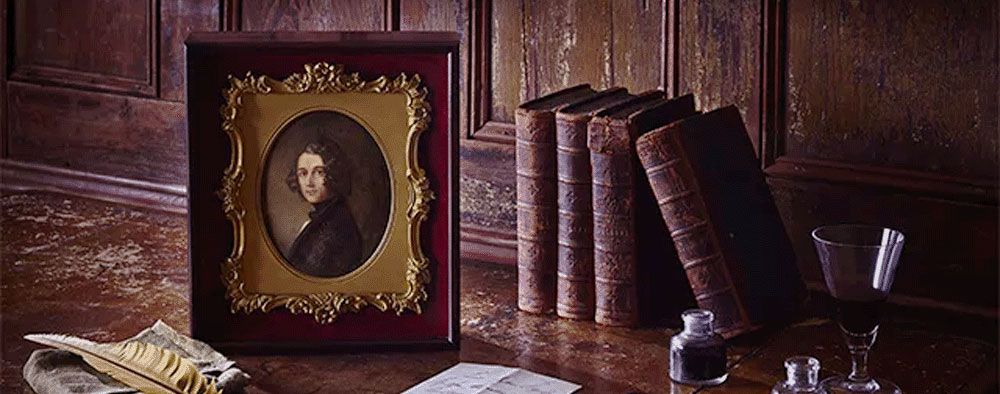Early years
Infancy in Portsmouth and London (1812-17)
Born on 7th February 1812 at a house in Mile End Terrace, Portsmouth, Hampshire. His father, John Dickens, worked as a clerk in the pay office of the Royal Dockyard. Family moved to London in 1815 when John was posted there.
Happy boyhood in Kent (1817-22)
Father posted first to Sheerness, then to Chatham Royal Dockyard, Kent. Pleasant, formative boyhood years for Charles. His experiences in Chatham and neighbouring Rochester inspired much of his adult work.
1822-
London, Prison and the Blacking Factory (1822-27)
His schooling interrupted when he followed the family to London, his father having been recalled there. Put to work in late 1823 at a blacking factory, and his father imprisoned for debt in early 1824: these humiliations provided a mainspring for his subsequent ambition.. Left factory in 1823/4, for his final two years of schooling.
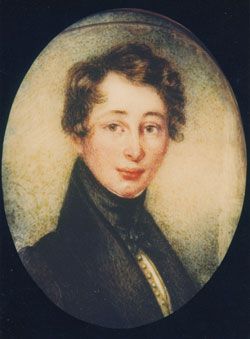
1827-
Making the most of a modest beginning (1827-29)
His education over at the age of 15. Employed by a firm of solicitors. Made a great impression as a lively character, a skilled mimic, with an encyclopaedic knowledge of London. Studied shorthand and was later to achieve an exceedingly high standard.
Established in journalism (1829-33)
Started as a freelance reporter of law cases. Admitted as reader at the British Museum Library in 1830. Became a parliamentary reporter in 1831.
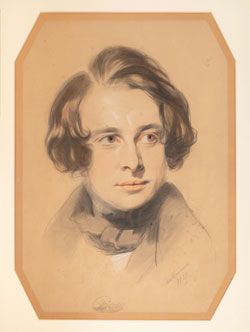
1833-
Success as a short story writer (1833-36)
First short story published in 1833. Continued his success as a reporter, joining the The Morning Chronicle in 1834. Married in 1836.
Fame and dynamic progress as an author (1836-40)
Became household name through the publication in instalments of Pickwick Papers, 1836-37. Left The Morning Chronicle in 1836. Editor of new magazine, Bentley's Miscellany, from 1837 to 1839. Wrote Oliver Twist, Nicholas Nickleby and shorter pieces.
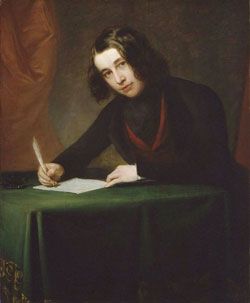
1840-
Loss of touch and spectacular recovery (1840-43)
After completing The Old Curiosity Shop and the much less popular Barnaby Rudge in 1841, set off to visit the United States during the first half of 1842. On his return, wrote American Notes for General Circulation, which was received badly in the USA and lukewarmly in the UK. Martin Chuzzlewit, begun at the end of 1842, was not immediately popular. Reputation re-established with publication of first Christmas story, A Christmas Carol.

1843-
Maturing as a successful author (1843-50)
Christmas stories, minor works, visits to France and Italy, amateur dramatics and other activities assumed greater importance, but two major works completed. Dombey and Son, begun in 1846, and David Copperfield, begun in 1849, were more serious and more carefully thought out than previous novels.
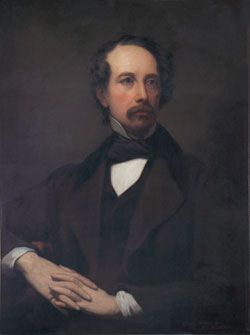
1850-
Established as publisher/editor/author (1850-58)
Became joint owner and editor of a new weekly journal, Household Words, in 1850. Contributed three major works during this period: Bleak House, Hard Times and Little Dorrit. Purchased Gad's Hill Place in 1856. Separated from his wife in 1858.
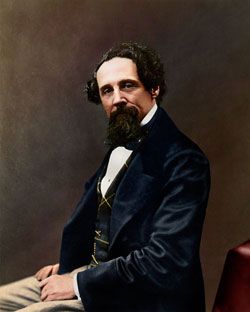
1858-
A new role and a new journal (1858-67)
Gave first public professional readings of his works in 1858. Established in 1859 a new weekly journal, All The Year Round, which replaced Household Words. Serialisation of A Tale of Two Cities began with first number. Contributed two other major works during this period: Great Expectations and Our Mutual Friend. Readings assumed greater importance. Involved in major rail accident, 1865. Last Christmas story published in 1867.

1867-70
Final bursts of energy (1867-70)
With failing health, devoted much of his energy to exhausting reading tours, visiting the USA for a second time in 1867/68. Completed nearly half of The Mystery of Edwin Drood. Died at Gad's Hill on 9 June 1870. Buried in Westminster Abbey, London.
